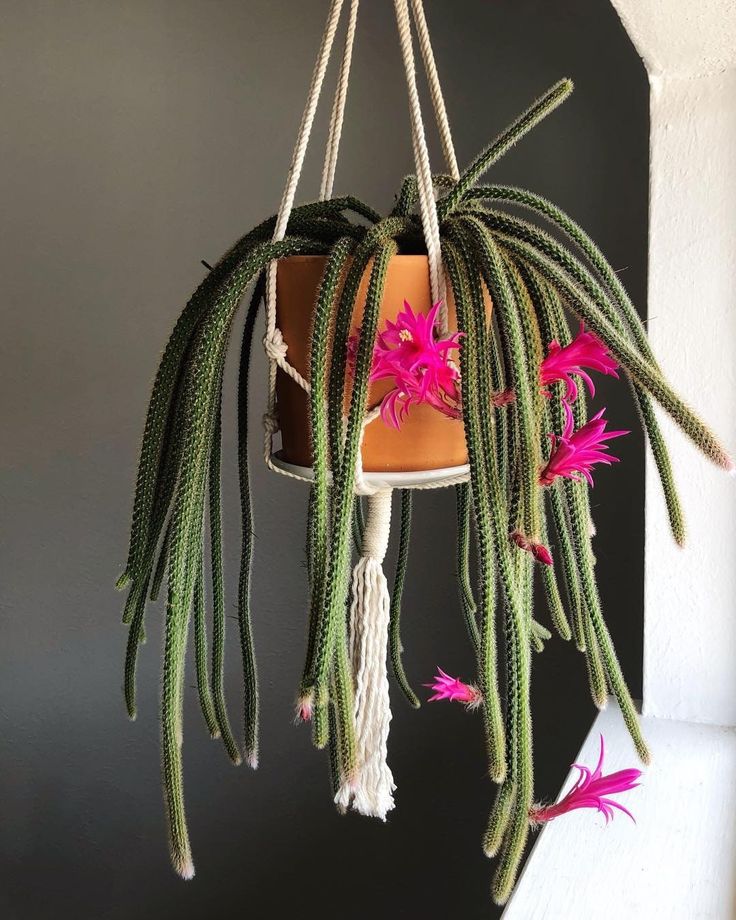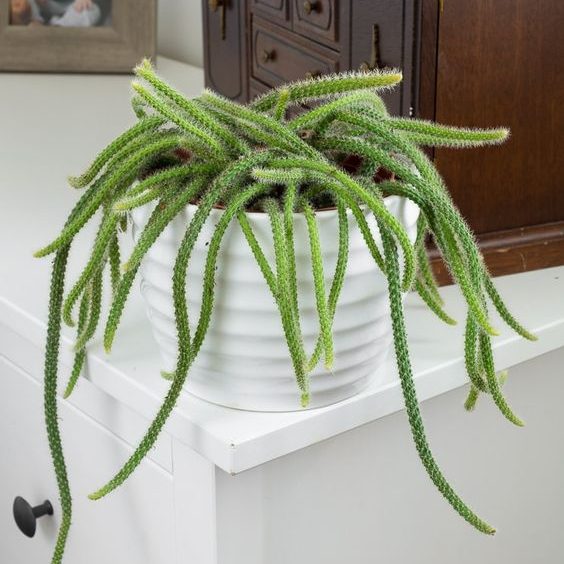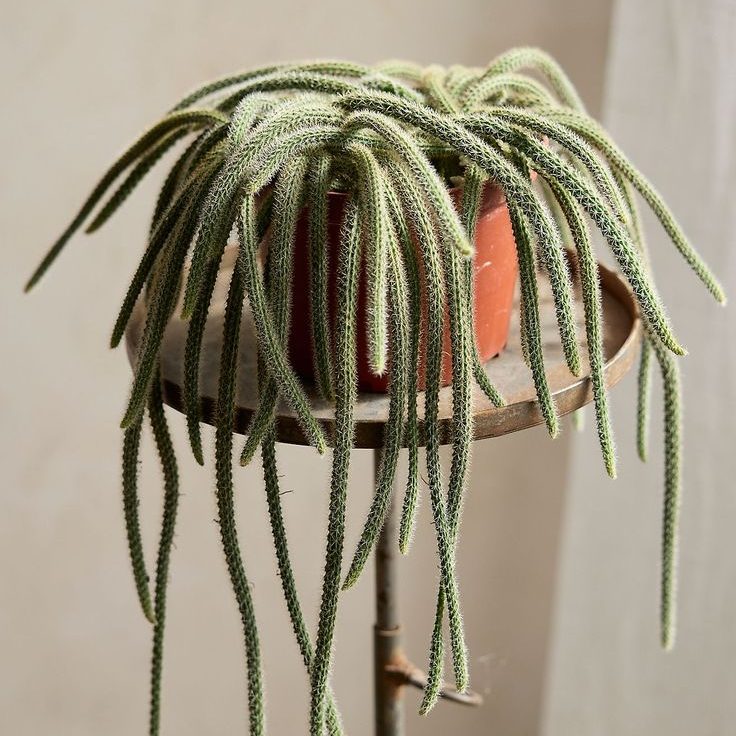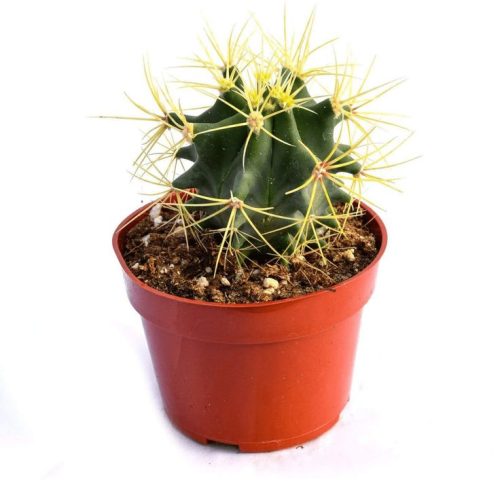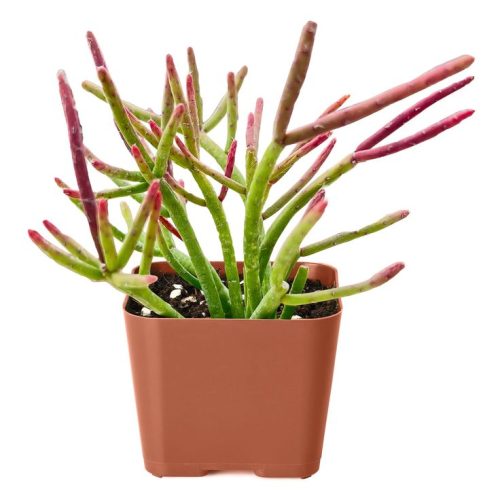Rat Tail Cactus
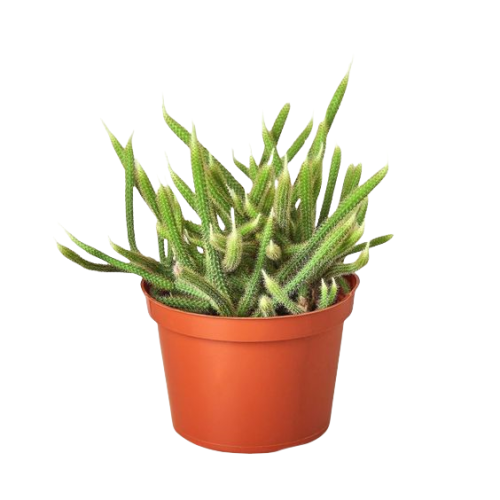
- Botanical Name: Aporocactus flagelliformis
- Family Name: Cactaceae
- Stems: 3-6ft, 0.5-1in.
- Temperature: 18-28℃
- Other: Likes light, drought-resistant, less water
Overview
The Rat Tail Cactus (Aporocactus flagelliformis) is a Cactaceae species prized for its long, trailing stems and colorful blooms. Its stems, adorned with short, red-brown spines, have a soft, bristly feel.
Product Description
The Rat Tail Cactus: A Gardener’s Delight
Visualize a plant that’s as resilient as it is enchanting—the Rat Tail Cactus (Aporocactus flagelliformis) fits the bill perfectly. With its slender, trailing stems that ripple like a verdant stream and its vibrant, seasonal blossoms, this cactus is a favorite among plant enthusiasts. Originating from the warm embrace of Mexico, it’s right at home latching onto the crags of rocks or the sturdy limbs of trees. This sun-loving species has a laid-back attitude towards a bit of shade now and then.

Rat Tail Cactus
Easy on the Eyes, Effortless to Care For
When you invite a Rat Tail Cactus into your home, you’re welcoming a low-fuss, high-style companion. It’s a plant that prefers to keep things simple—thrive in dry conditions, take the cold in stride, but steer clear of frost. A well-draining soil that strikes a balance between acidic and alkaline is all it needs to put down roots. During the growing season, it’s happy with a moderate amount of water, and it’s perfectly content to sip less during the winter months. A bi-weekly dose of diluted liquid fertilizer during the warmer months is like serving it a five-star meal.
To propagate, all you need is a sturdy stem cutting, a moment to form a scar tissue, and then it’s ready to be nestled into some cactus potting mix. While it’s generally safe around curious hands and paws, those spines can deliver a tiny prick if you forget to wear gardening gloves.
A Gardening Award Winner
This cactus isn’t just a pretty face; it’s also a gardener’s dream come true. It’s ideal for bringing a bit of the outdoors in, whether it’s gracing a hanging basket that dances in the breeze or taking center stage in a chic pot. It’s a hit with the buzzing bees, fluttering butterflies, and it even whets the appetite of birds and small mammals. The Rat Tail Cactus has been honored with the “Award of Garden Merit” from the Royal Horticultural Society, a testament to its gardening excellence. It’s a plant that’s as delightful to cultivate as it is to admire, making it a prized addition to any green thumb’s collection.
Service
To prevent and manage potential pests and diseases for the Rat Tail Cactus (Aporocactus flagelliformis), follow these key practices:
- How can I prevent pests on my Rat Tail Cactus? Keep the plant clean and inspect it regularly. Use insecticidal soap for infestations.
- What to do if my Rat Tail Cactus has root rot? Trim bad roots and repot in fresh soil. Water less frequently.
- How should I water my Rat Tail Cactus? Water thoroughly, then wait for the soil to dry out before watering again.
- How much light does it need? Bright, indirect light is best. Avoid harsh midday sun.
- How do I fertilize it? Use a diluted cactus fertilizer every two weeks in the growing season.
- How to care for it in winter? Reduce watering and provide cool, bright light.
- How can I tell if it has a nutrient deficiency? Look for pale leaves or poor growth. Adjust feeding or soil as needed.
- What diseases can it get? Root rot is common. Ensure good drainage and avoid overwatering.
- How often should I repot it? Every 1-2 years after the growing season.
Applicable scenarios for Rat Tail Cactus
